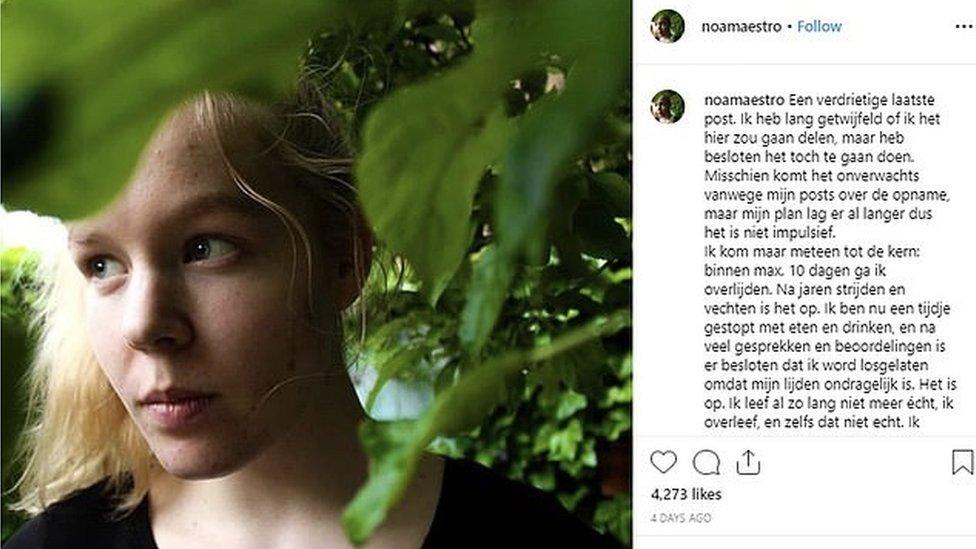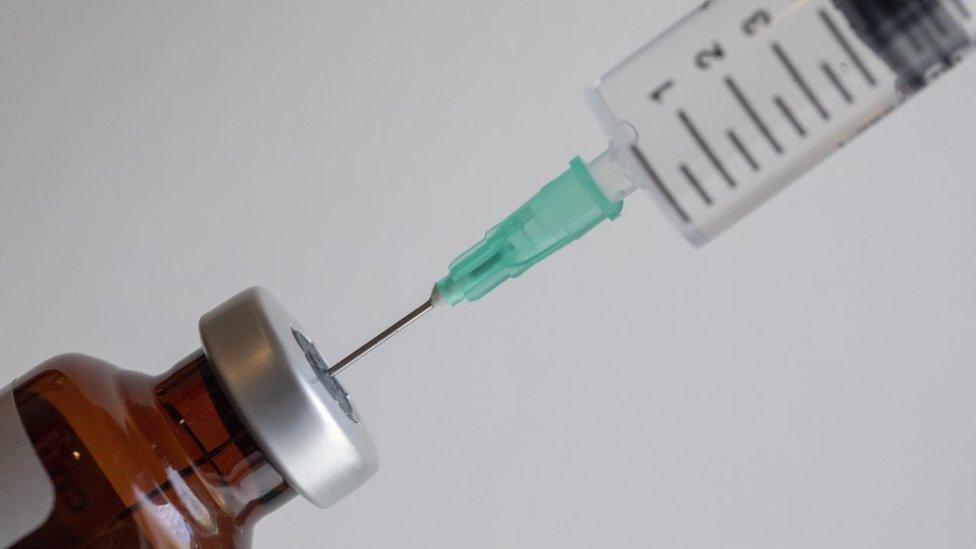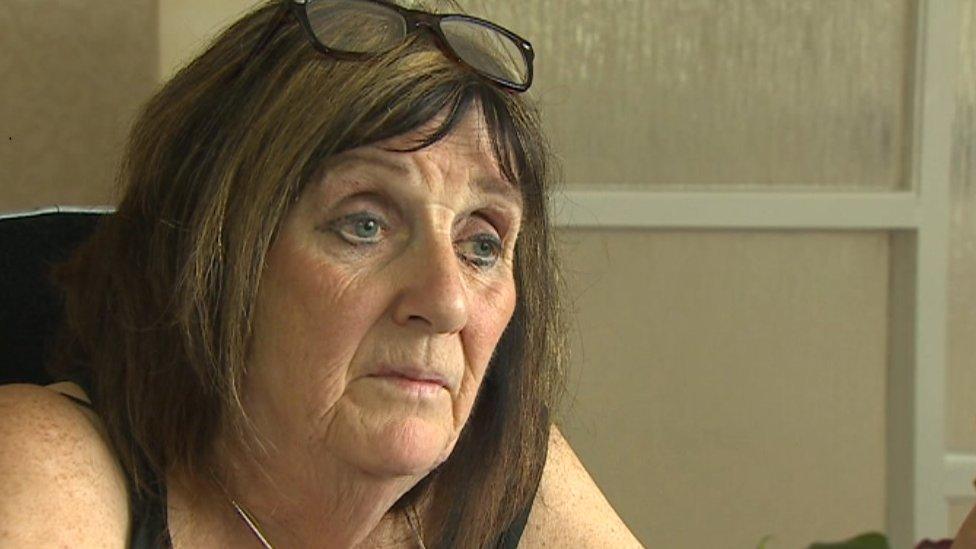Why Dutch teenager Noa's tragic death was misunderstood
- Published

Noa Pothoven wrote her last Instagram entry days before her death
"Love is letting go," wrote 17-year-old Noa Pothoven in a note to her Instagram followers. A few days later she was dead.
Hers was the dreadful story of a teenager with a desperate mental illness who starved herself to death.
She had once enquired about euthanasia without telling her parents - but was turned away, considered too young and presumably curable.
Euthanasia by a doctor is legal under strict conditions in the Netherlands, but this was not one of those cases.
Global news sites skimmed Dutch newspaper reports and noted that she had once approached an end-of-life clinic.
Her digital feeds were scavenged for photos before headlines were splashed about the "tragic case of a traumatised teenager" who used euthanasia to escape a life of suffering.
Except they were wrong.
Perhaps it was lost in translation by editors dashing to share a story without cross-checking the facts.
Her death was caused by starvation: it was a case of non-interference not intervention.
Allow X content?
This article contains content provided by X. We ask for your permission before anything is loaded, as they may be using cookies and other technologies. You may want to read X’s cookie policy, external and privacy policy, external before accepting. To view this content choose ‘accept and continue’.

Noa's story
At the age of 11, Noa Pothoven was sexually assaulted at a school party; three years later, she was raped by two men.
Fear and shame kept her silent.
Her pain manifested itself in post-traumatic stress disorder (PTSD), depression, and eating disorders.
Eventually she turned her teenage diary into an autobiography, which she published to try to break down taboos for young people who had suffered similar abuse and struggled to get support.
Allow Instagram content?
This article contains content provided by Instagram. We ask for your permission before anything is loaded, as they may be using cookies and other technologies. You may want to read Meta’s Instagram cookie policy, external and privacy policy, external before accepting. To view this content choose ‘accept and continue’.

While Noa talked about improving the life of others, hers continued to deteriorate. Until eventually she wrote her post on Instagram.
"After years of battling and fighting, I am drained. I have quit eating and drinking for a while now, and after many discussions and evaluations, it was decided to let me go because my suffering is unbearable.
"Out of fear and shame, I relive the fear, that pain every day. Always scared, always on my guard. And to this day my body still feels dirty.
"My house has been broken into, my body, that can never be undone."
Her sister Isa shared the news with her followers: "Sunday 2 June at 02:40 Noa passed away. Sleep well, sweetheart. We will have to let go of you."
Around the world her death was wrongly reported as a case of euthanasia: "17-year-old Dutch Girl Who Was Raped as a Child is Legally Euthanised."
The story was reported by at least one BBC international outlet and the "fake news" went as far as Pope Francis's social media feed.
Allow X content?
This article contains content provided by X. We ask for your permission before anything is loaded, as they may be using cookies and other technologies. You may want to read X’s cookie policy, external and privacy policy, external before accepting. To view this content choose ‘accept and continue’.

What really happened
Noa Pothoven was not given the lethal cocktail of drugs provided - in a drink or by injection - when someone has been granted the right to die.
She went on hunger strike and was being fed through a tube. Eventually her family accepted her wish to die, so they stopped forcing her to stay alive and instead used palliative care to make her final days as peaceful and bearable as possible.
According to Dutch law "palliative sedation" aims to alleviate suffering at the end of life, external and is permissible when a patient's life expectancy is no more than two weeks.
The End-of-Life Clinic shared a statement (in Dutch) from Noa's friends, external: "To put an end to incorrect reporting (in foreign media in particular) about her death. Noa Pothoven did not die of euthanasia. To stop her suffering, she has stopped eating and drinking."
Such was the scale of misreporting the Royal Dutch Medical Association responded, external: "Under Dutch law, euthanasia is defined as the active termination of life, by a physician, at a patients voluntary and well informed request... on persons who suffer unbearably from a medical condition."
Ultimately the result is the same - she was allowed to end her life.
And this perhaps helps to explain why Noa Pothoven's story continues to travel.
It is difficult to imagine a teenager with no physical ailments essentially allowed to starve herself. It's hard to believe there was no alternative, no hope of recovery.

Read more here:

Was Noa let down by health professionals?
Noa Pothoven's devastated parents Lisette and Frans believe the Dutch authorities failed them.
Their daughter was undergoing intensive "trauma treatment", she spent time in hospital in an induced coma on a feeding tube, and in and out of psychiatric institutions.
Noa described the experiences as "degrading and humiliating", external.
She told the Gelderlander news website she had to wait more than a year for treatment for her eating disorder.
Her family hope the experience documented in her autobiography, Winning or Learning, will improve treatment for young people with complex health issues in the future.
Last year, 81 young people between the age of 10 and 19 took their lives in the Netherlands.
What is Dutch law on euthanasia?
Although Noa's request for euthanasia to Dutch authorities was rejected, international interest in her story was roused because it highlighted the fact that euthanasia is legal in the Netherlands under strict conditions.
Under the law, patients must be experiencing unbearable physical or mental suffering with no end in sight.
They must be considered of sound enough mind to be deemed capable of making this decision.
The person who wants to die must be at least 12 years old and those under the age of 16 need parental consent.
A regional committee decides if a doctor has taken due care, and any physician who fails to do so faces prosecution.
The practice is still controversial. And it is extremely rare for teenagers to be allowed to die.

If you've been affected by issues in this article, help and support is available.
The BBC has details of mental health support here.
In the Netherlands, support is also available.
GGZ Nederland provides mental health help, external, while 113.nl has a crisis line, external.
- Published9 November 2018

- Published20 September 2018
